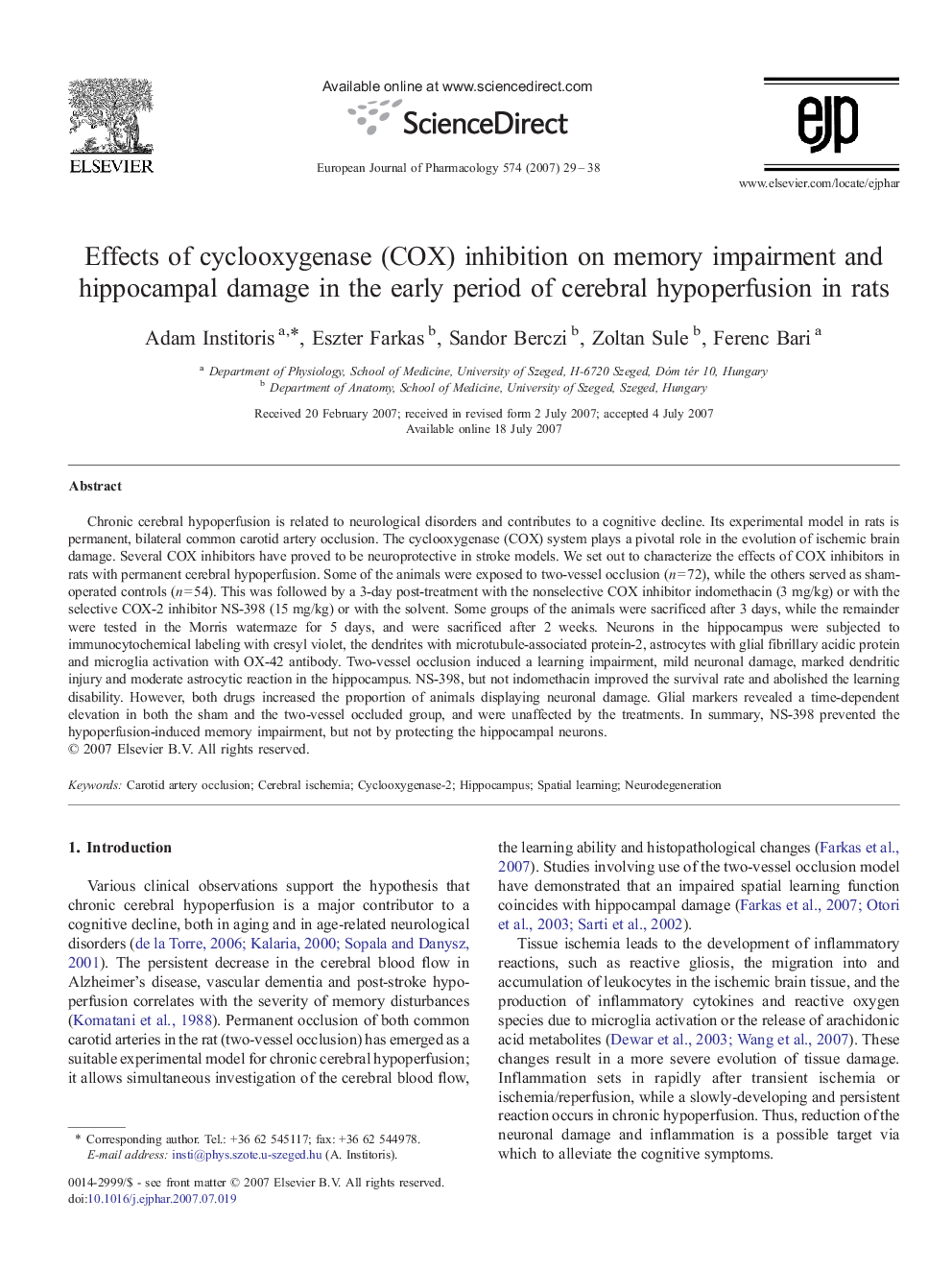| Article ID | Journal | Published Year | Pages | File Type |
|---|---|---|---|---|
| 2535666 | European Journal of Pharmacology | 2007 | 10 Pages |
Chronic cerebral hypoperfusion is related to neurological disorders and contributes to a cognitive decline. Its experimental model in rats is permanent, bilateral common carotid artery occlusion. The cyclooxygenase (COX) system plays a pivotal role in the evolution of ischemic brain damage. Several COX inhibitors have proved to be neuroprotective in stroke models. We set out to characterize the effects of COX inhibitors in rats with permanent cerebral hypoperfusion. Some of the animals were exposed to two-vessel occlusion (n = 72), while the others served as sham-operated controls (n = 54). This was followed by a 3-day post-treatment with the nonselective COX inhibitor indomethacin (3 mg/kg) or with the selective COX-2 inhibitor NS-398 (15 mg/kg) or with the solvent. Some groups of the animals were sacrificed after 3 days, while the remainder were tested in the Morris watermaze for 5 days, and were sacrificed after 2 weeks. Neurons in the hippocampus were subjected to immunocytochemical labeling with cresyl violet, the dendrites with microtubule-associated protein-2, astrocytes with glial fibrillary acidic protein and microglia activation with OX-42 antibody. Two-vessel occlusion induced a learning impairment, mild neuronal damage, marked dendritic injury and moderate astrocytic reaction in the hippocampus. NS-398, but not indomethacin improved the survival rate and abolished the learning disability. However, both drugs increased the proportion of animals displaying neuronal damage. Glial markers revealed a time-dependent elevation in both the sham and the two-vessel occluded group, and were unaffected by the treatments. In summary, NS-398 prevented the hypoperfusion-induced memory impairment, but not by protecting the hippocampal neurons.
